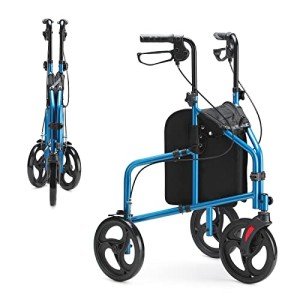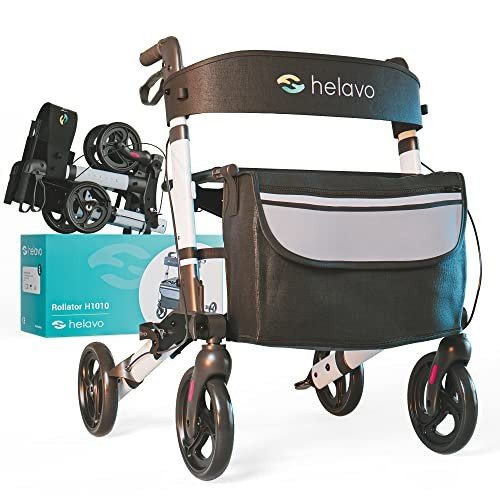
3
MayUnderstanding Medical Walkers: A Comprehensive Guide

Medical walkers, also known as walking frames, have become essential mobility aids for individuals recovering from surgery, managing chronic conditions, or simply requiring additional support while walking. These devices can significantly enhance physical independence and safety, allowing users to carry out daily activities with more confidence. This article delves into the functions, types, advantages, and considerations when choosing a medical walker.
What is a Medical Walker?
A medical walker is a portable frame designed to assist individuals who have difficulty walking independently. It provides support and stability, helping users maintain balance and prevent falls during ambulation. Medical walkers come in various designs tailored to meet varying user needs, ensuring that individuals can regain mobility effectively.
Types of Medical Walkers
There are several types of medical walkers, each with unique features to cater to specific needs. Below is a table summarizing the key types of walkers:
| Type of Walker | Description | Best Suited For |
|---|---|---|
| Standard Walker | A lightweight frame with four legs; requires lifting to move. | Users with good upper body strength but limited lower body stability. |
| Wheeled Walker | Similar to standard walkers but equipped with wheels on the front; easier to maneuver. | Users who need more mobility but still require support. |
| Rollator Walker | A walker with four wheels, brakes, and a seat; designed for those who can self-ambulate but need occasional rest. | Active seniors or individuals with moderate mobility. |
| Sit-to-Stand Walker | A walker designed to assist individuals in sitting down and getting up safely. | Individuals with severe mobility limitations or weak legs. |
| Bariatric Walker | A heavy-duty walker designed to support larger weights and provide additional stability. | Individuals with obesity or those requiring extra support. |
Benefits of Using a Medical Walker
Incorporating a Medical Walker (Going Here) into one’s life can yield numerous benefits, including:
- Improved Stability and Balance: Walkers provide users with a wider base of support, allowing for better stability while walking.
- Increased Independence: Medical walkers foster a greater sense of autonomy, enabling users to navigate their environment independently.
- Injury Prevention: By reducing fall risks, walkers can help prevent injuries, providing peace of mind for both users and caregivers.
- Enhanced Mobility: Medical walkers often allow users to cover greater distances compared to using a cane or walking unaided.
- Mental Health Benefits: Maintaining mobility and independence can have positive effects on one’s mental well-being, reducing feelings of isolation and depression.
Key Considerations When Choosing a Medical Walker
Selecting the right medical walker involves several factors, including user needs, physical abilities, and personal lifestyle. Below are essential considerations:
- Weight Capacity: Ensure that the walker can safely support the user’s weight.
- Walker Height: The walker should be adjustable to the user’s height for optimal comfort and support.
- Mobility Needs: Consider whether the user requires a walker for short distances, longer ambulations, or both.
- Accessories: Some walkers come with added features like seats, baskets for carrying belongings, or hand brakes, which might be beneficial depending on user needs.
- Portability: If the user plans to transport the walker frequently, a lightweight model that can be easily folded is preferable.
How to Use a Medical Walker Effectively
To maximize the benefits of a medical walker, users should follow certain guidelines:

- Adjust the Height: Ensure the walker is adjusted properly to the user’s height so that the elbows are slightly bent when gripping the handles.
- Take Small Steps: Users should move the walker a step ahead and follow through with their feet, using the walker for additional support.
- Keep a Steady Pace: Walkers should be used at a comfortable pace, ensuring the user feels stable and secure.
- Practice Maneuvering: Users should practice turning and navigating obstacles in a safe environment to build confidence.
- Engage Caregivers: Family members or caregivers should assist in ensuring proper usage to enhance safety during mobility.
FAQs about Medical Walkers
1. At what point should I consider using a medical walker?
Medical walkers are often recommended post-surgery, after an injury, or if you experience balance issues. Consultation with a healthcare provider can help determine if it's the right time for you.
2. Is a medical walker covered by insurance?
Many insurance plans, including Medicare, may cover the cost of a medical walker if prescribed by a physician. It’s advisable to check specific coverage details with your provider.
3. Can I use a medical walker outdoors?
Yes, many walkers are designed for both indoor and outdoor use. Ensure the walker you choose has appropriate wheels and sturdiness for outdoor terrain.
4. How do I maintain my medical walker?
Regularly check for loose nuts or screws, keep it clean, and ensure wheels or feet are in good condition to prevent any safety issues.
5. How do I choose the right size walker?
It's crucial that the walker is adjustable to your height; your elbows should be slightly bent when holding the handles, and your wrists should be aligned with the top of the walker.
Medical walkers are invaluable tools for those needing assistance with mobility. By understanding the types, benefits, and proper usage of walkers, individuals can enhance their quality of life and regain independence. As with any medical aid, consulting with a healthcare professional will help ensure the best fit and safety for the user.


Reviews